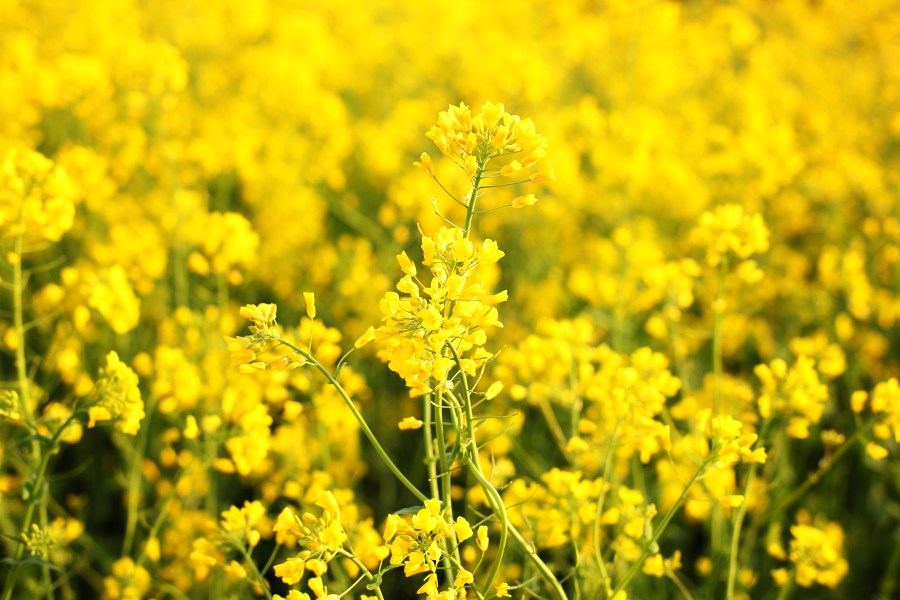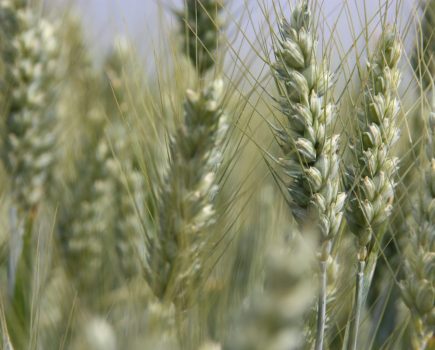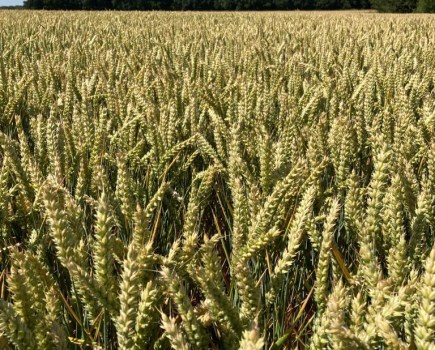With many of the challenges facing oilseed rape occurring during the critical establishment phase, what must a variety offer to support the crop to achieve its potential? CPM takes a look at some of the options at the top of their game.
“If it doesn’t meet the standards, it simply doesn’t make the grade.” DUNCAN DURNO
By Janine Adamson
Despite so much being stacked against UK oilseed rape, grown well, it continues to offer a raft of benefits to an arable rotation. However, by being so risk-laden from the off, this places additional pressure on selecting the optimum variety to boost OSR’s success rate from the moment the seed is in the ground.
With new releases from plant breeders added to the AHDB Recommended List each year, arable technical manager for Openfield, Duncan Durno, says truly understanding the importance of variety choice within today’s climate is critical.
Furthermore, it’s this insight which steers the selection process when it comes to curating their portfolio. “With a distinct lack of viable alternative break crops, most growers would ideally like to reintroduce an area of OSR back into their rotations if they’re not growing it already,” continues Duncan.
“This may be helped by the fact this season’s plantings are in better condition than we’ve seen for several years, namely due to improved establishment from better drilling conditions and reduced cabbage stem flea beetle numbers.
“However, the industry is fully aware of the risks during establishment, some which are beyond the grower’s control, so the varieties of today must mitigate those factors as much as possible right through the growing season. Subsequently, we must ask – what is it that we now require from a variety?”
According to Duncan, Openfield doesn’t introduce an OSR variety to its portfolio unless it meets a strict set of criteria, centered around genetic traits and gross output. The first factor the team considers beyond yield is growth habit.
This is because autumn vigour is essential to give the crop its best chance of establishing successfully and growing through its most vulnerable stage. “As establishment is the time when crops are at the greatest risk of being lost, we’re looking for a strong growth habit during that autumn period,” comments Duncan.
Equally, this must translate through to the spring, he adds. “Along with a good plant structure, we know that spring vigour and robust growth are essential to help reduce the effects of CSFB larvae.”
The next factor to consider is drilling window, he adds. “A flexible drilling window is key to ensure OSR can be planted into optimum seedbed conditions rather than adhering to a set calendar date, which may have been the case in the past. Growers have to be able to pick and choose when they sow rather than be dictated to by a variety.”
If soil and weather conditions come right early in the drilling window, strong disease resistance and lodging resistance are essential, points out Duncan. “As with any crop, drilling early leaves it more susceptible to disease, in the case of OSR that’s verticillium wilt and stem canker. Conversely, if conditions don’t come right until later in the season, vigour and winter hardiness become even more important.”
With these criteria in mind, which varieties have successfully made it through Openfield’s screening process? Duncan says a hybrid option which has impressed both him and the cooperative’s customers is LG Armada. “I believe LG Armada offers the best yield and trait combination available, as well as ticking all of our boxes.
“It has fantastic autumn and spring vigour as well as strong foliar disease resistance, verticillium wilt tolerance and stem health traits making it very flexible with regard to drilling date.”
YIELD PRESERVATION
According to Duncan, the variety’s trait package helps to protect its inherent yield potential throughout the growing season, with Limagrain’s Sclero-flex trait adding tolerance to sclerotina and pod shatter protecting yield right through to harvest.
Limagrain’s OSR & sunflower product manager, Florentina Petrescu, believesArmada is one of the top hybrid varieties in the UK for a good reason. “We like to call it a fully-loaded variety because it comes with a seriously strong agronomic package.
“One of the standout features of Armada is its impressive autumn growth – it establishes well and quickly, giving farmers more flexibility with their drilling window. Then come the spring, it really kicks into gear with a vigorous growth habit which is especially useful when pests become a problem, and crops need to bounce back fast.”
Florentina adds that on the disease front, Armada scores well: phoma stem canker (6), light leaf spot (7), and good tolerance to verticillium. “Farmers also appreciate its strong resistance to lodging [8] and pod shatter – both crucial for securing yield right through to harvest. Pod shatter is increasingly essential on farm as we see more volatile weather patterns across the seasons.”
She says most importantly, Armada has shown consistency, with a high gross output across all UK regions. “It’s a variety that performs well on farm. It’s clean, vigorous, and dependable with the yield potential to match.”
Firmly in agreement is Gloucestershire grower Ed Horton of SS Horton and Sons, a 3800ha mixed system near Cirencester. Despite the difficult, wet conditions of last spring, the farm achieved its all-time record OSR yield of 5.1t/ha at Harvest 2024 with a crop of Armada. “Our long-term OSR average is around 3.9t/ha so Armada delivered a significant step up even when conditions were poor,” he says.
Opting to sow later – around the second or third week of September – using a Horsch Avatar into cooler, thinner soils, Ed adds that he’s found Armada has very good establishment. “Our seed rate is also low – 35-40 seeds/m2 to avoid an overly thick canopy.
“With Armada, it creates great canopy depth, allowing sunlight all the way through to the lower leaves. And with its strong foliar disease resistance including Sclero-flex, we didn’t have to apply any fungicide to our OSR last season and still achieved that top yield.”
According to Ed, his success with OSR has mainly been down to the farm adopting an integrated approach centred around nurturing biodiversity to encourage beneficial insect predators such as parasitic wasps. As such, pressure from cabbage stem flea beetle is now barely negligible and crop management can be insecticide-free.
Nutrition is finessed to maximise uptake, applying a maximum of 175kgN/ha through a range of sources including solid and liquid sulphur and solid and liquid urea. Companion cropping has also been used for the past 10 years utilising a buckwheat, berseem clover and crimson clover mix drilled at the same time as OSR.
With Armada proving a hit, Ed has planted 400ha this season with 350ha planned for next year. “We have a very diverse rotation including winter wheat, winter barley, spelt, oats, beans, peas, rye, triticale and some minority crops for seed such as phacelia and turnips.
“Having a variety like Armada certainly helps us to continue to believe in OSR as part of that cropping mix.”
New to Openfield’s portfolio this season is DSV Dompteur, which Duncan says again fits all of the cooperative’s criteria while being the highest yielding 2025 candidate variety (111% UK gross output). “Dompteur has all of the yield-supporting traits that we seek plus a flexible drilling date and a growth habit to compliment,” he points out.
Something which will undoubtedly be commended by the industry, is that the hybrid variety features DSV’s new phoma blocker trait. Marketing and sales manager, Sarah Hawthorne, explains this combines two complex phoma resistance genes – RLMS and RLM7 – to provide the plant with added protection against varying phoma strains.
“But equally it’s an ‘all-in’ variety – it really does have everything. From high oil content (46.3) to strong pod generation, I personally believe it’s the best OSR variety DSV has bred in the past 10 years,” she suggests.
Another benefit is Dompteur’s excellent NUE function, enabling a crop to make the most of soil-based nutrients, higlights Sarah. “With increasing volatility in synthetic inputs, both pricing and availability, we’re finding this is becoming an increasingly important factor when growers are considering varieties.”
RESISTANCE RATINGS
Resistance scores-wise, Dompteur ranks an 8 for light leaf spot and has proven to perform well in verticillium wilt trials throughout Europe. It also carries the pod shatter resistance gene, which Duncan stresses is a non-negotiable for Openfield’s OSR portfolio. “It’s a must – no variety is added unless it has that trait,” he says.
Another hybrid candidate variety championed by Duncan is KWS Domingos, which he believes offers a solid solution for growers in the East/West region. “It’s trait-loaded plus has a robust growth habit to maximise its yield potential.
“There’s a pattern emerging here, but if it doesn’t meet the standards, it simply doesn’t make the grade for Openfield.”
KWS product manager for OSR, oats, peas and rye, Rory Hannam, raises Domingos offers a high gross output of 109% of controls for the East/West. “It also has pod shatter resistance and TuYV resistance, both essential for a successful crop of OSR in the current climate.
“With growers looking to reduce or apply no insecticide to crops, having TuYV resistance is the best option to mitigate any risk of aphid infestation,” he adds.
In terms of numbers, Domingos has a high oil content of 45.9%, and scores a 7 for light leaf spot and an 8 for phoma. It’s also been screened by KWS for tolerance to verticillium.
Vigour wise, its quick to get going, says Rory. “Domingos has very quick spring vigour allowing the variety to grow away from potential CSFB larval damage or any adverse conditions experienced over winter.
“Whereas KWS’ internal trials across two years and nine locations throughout Europe have shown the variety yields well at lower nitrogen doses compared with an N-efficient control.
“It’s a really exciting option to try out this autumn and one to watch out for. It ticks a lot of the boxes required of a modern, resilient OSR variety, providing the traits required for a successful, profitable OSR crop,” he concludes.
This article was taken from the latest issue of CPM. Read the article in full here.
For more articles like this, subscribe here.
Sign up for Crop Production Magazine’s FREE e-newsletter here.




